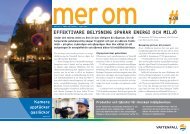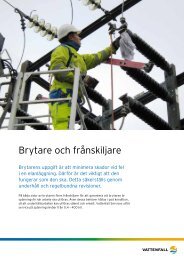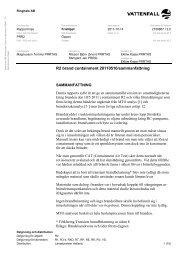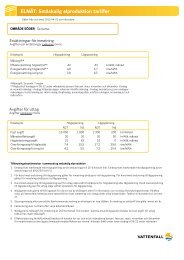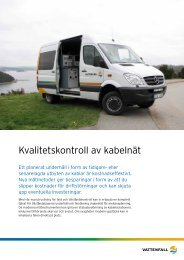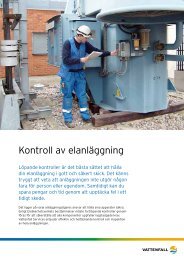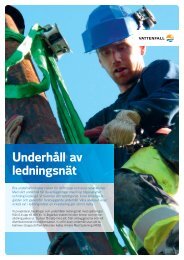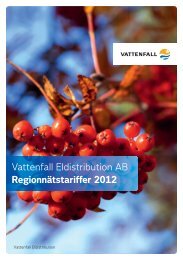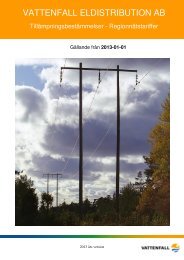This environmental impact assessment for Kriegers flak ... - Vattenfall
This environmental impact assessment for Kriegers flak ... - Vattenfall
This environmental impact assessment for Kriegers flak ... - Vattenfall
Create successful ePaper yourself
Turn your PDF publications into a flip-book with our unique Google optimized e-Paper software.
142 CONSEQUENSES OF THE WIND FARM<br />
picture will be greatly changed. A vertical element in<br />
an open landscape dominated by horizontal lines will<br />
cause a big contrast. There<strong>for</strong>e, the wind turbines will<br />
dominate from a close view. It will, however, be dif-<br />
Þ cult to estimate the height of the turbines as there is<br />
nothing else to relate to. The turbines will probably be<br />
viewed as smaller than they are.<br />
The visualisations below show how the wind<br />
turbines will be viewed from an height corresponding<br />
to that of a bridge, at 1,8 and 3,6 km distance (see<br />
pictures at the bottom of the page).<br />
It has not been decided whether trafÞ c will be allowed<br />
in the wind farm area during the operational<br />
phase. According to the law on the Swedish Economic<br />
Zone, it follows that the Government, or the authority<br />
appointed by the Government, (the National Maritime<br />
Board), may issue regulations <strong>for</strong> a protective zone of<br />
500 metres around each wind turbine. In practice, such<br />
a protective zone would mean that the whole wind farm<br />
plus 500 meters around it would be sealed off.<br />
12.8.2 Collision risk<br />
Big shipping lanes pass to the east, south and west of<br />
<strong>Kriegers</strong> Flak at a safe distance from the wind farm<br />
(see pictures in Chapter 11.10). Single ships may, however,<br />
always navigate outside of the shipping lanes and<br />
thereby pass <strong>Kriegers</strong> Flak at a closer distance. Colli-<br />
sions between ships and wind turbines may be caused<br />
by bad navigations, engine failure or faulty/damaged<br />
navigational equipment.<br />
A collision may cause the turbines and the ships to<br />
spill oil and ships may also spill chemical cargoes. Oil<br />
spills can cause <strong>impact</strong> over larger areas and drift away<br />
with the wind. 18 % of all goods transported in the<br />
Baltic Sea is regarded as dangerous. A collision could,<br />
there<strong>for</strong>e, cause great consequences <strong>for</strong> the marine<br />
environment.<br />
There are, however, a number of international rules<br />
that have arisen to prevent large spills. Since 1996, all<br />
new tankers with a capacity of more than 5 000 tdw,<br />
must have a double hull and ships with single hull will<br />
only be allowed until 2015 in the EU countries. Modern<br />
tankers nowadays use several compartments that<br />
are separated, instead of only one large compartment.<br />
<strong>This</strong> is a measure to prevent large spills.<br />
The risk of a collision between ships and the wind<br />
farm<br />
On behalf of Sweden Offshore, two studies have been<br />
carried out regarding the risks of a collision between a<br />
ship and the planned wind farm and the consequences<br />
of such a collision.<br />
The Þ rst risk analysis was conducted by Germanischer<br />
Lloyd (GL), one of the leading European com-





